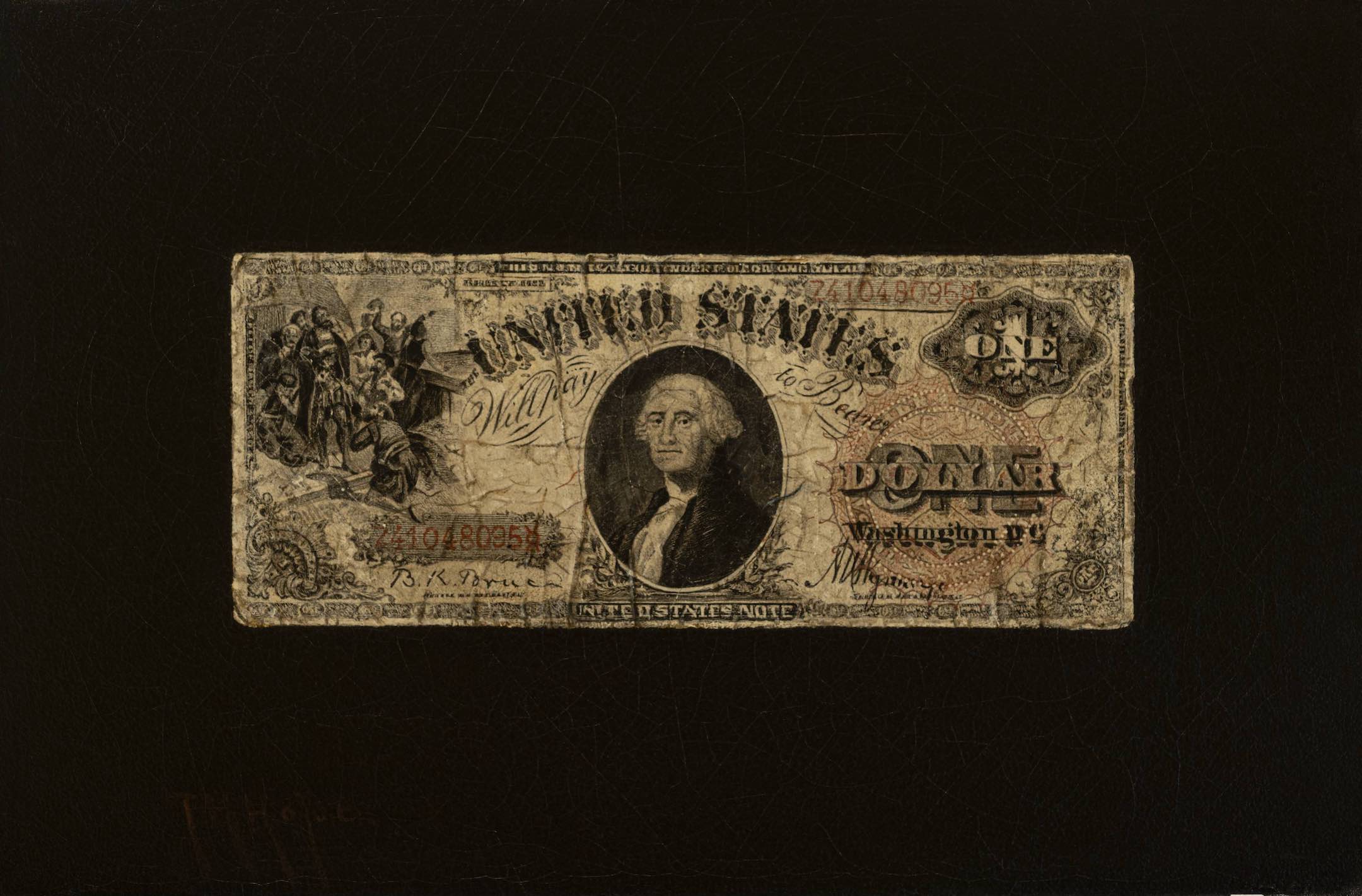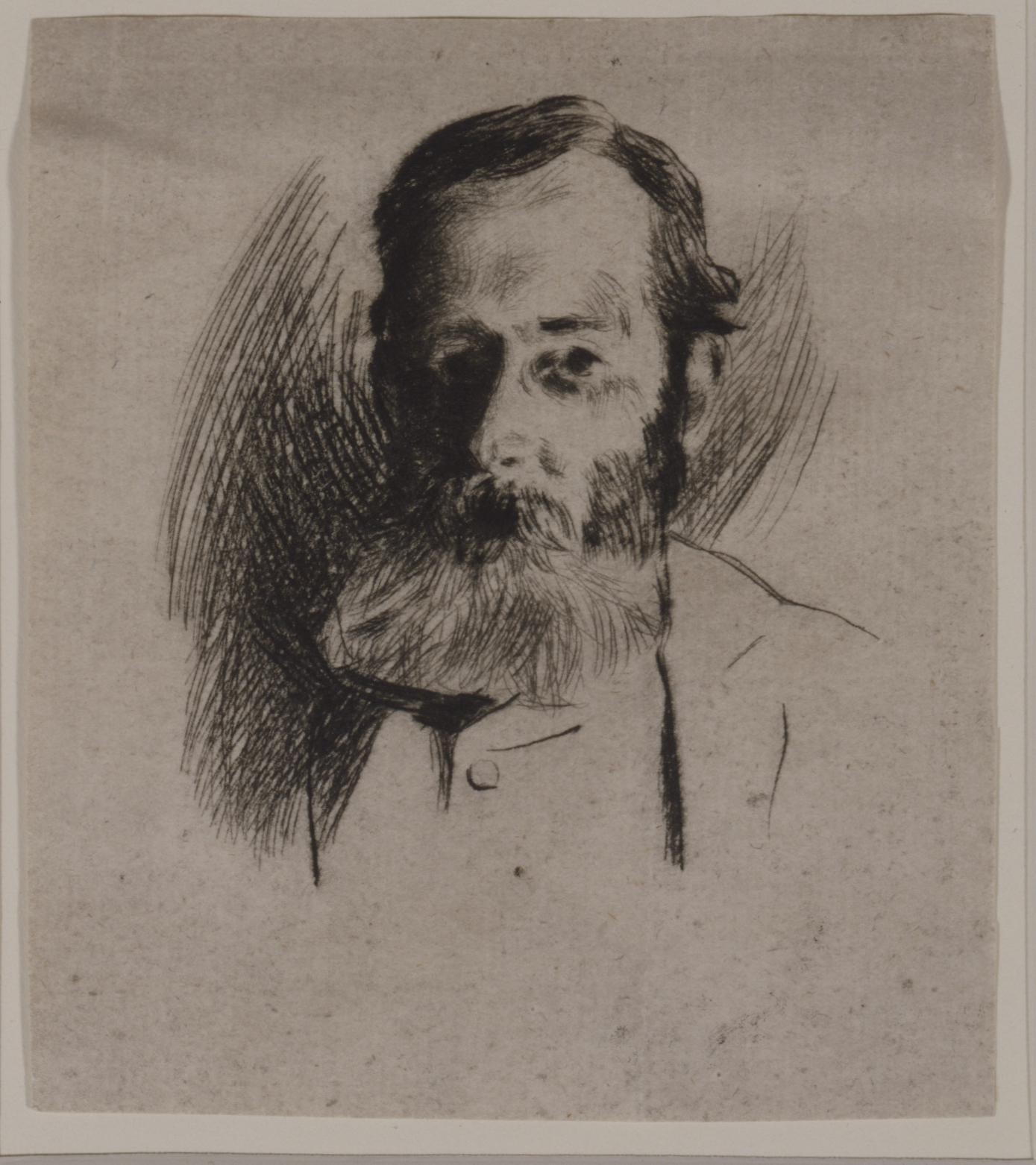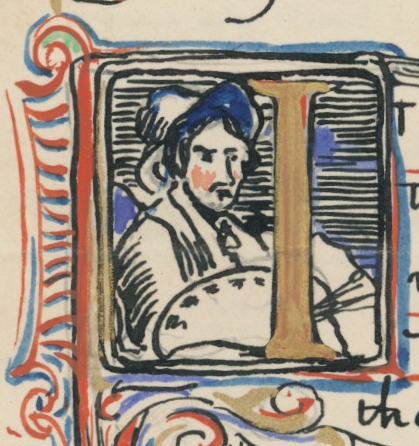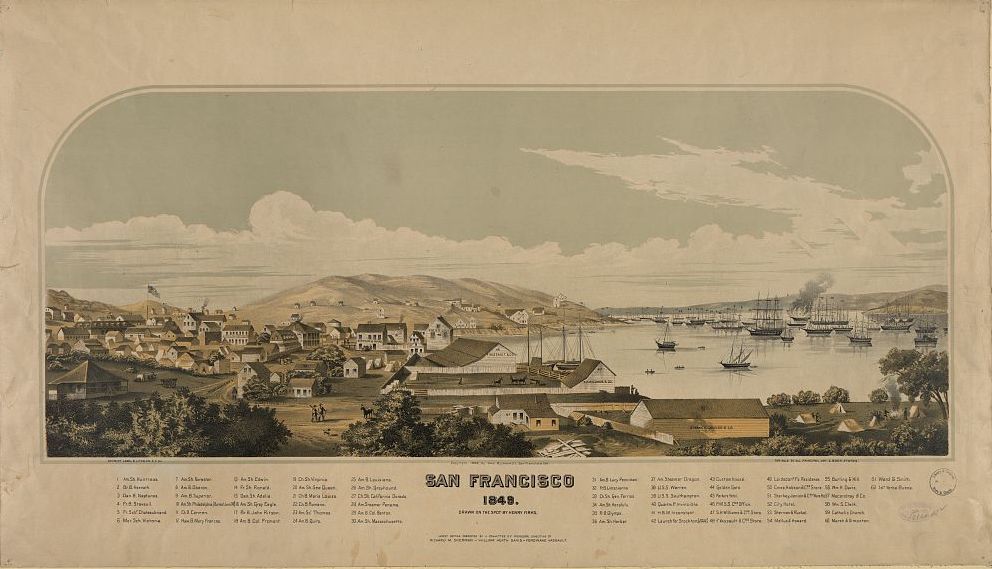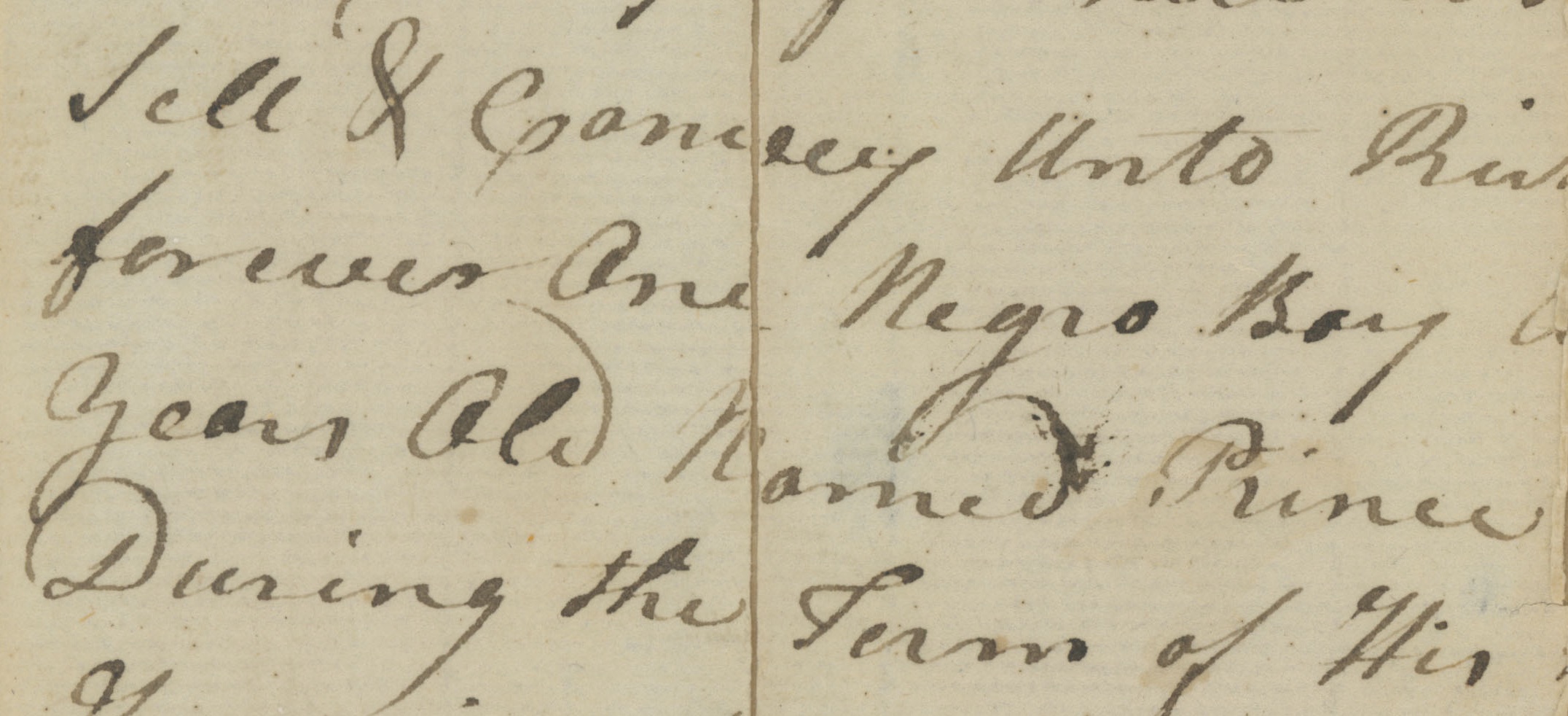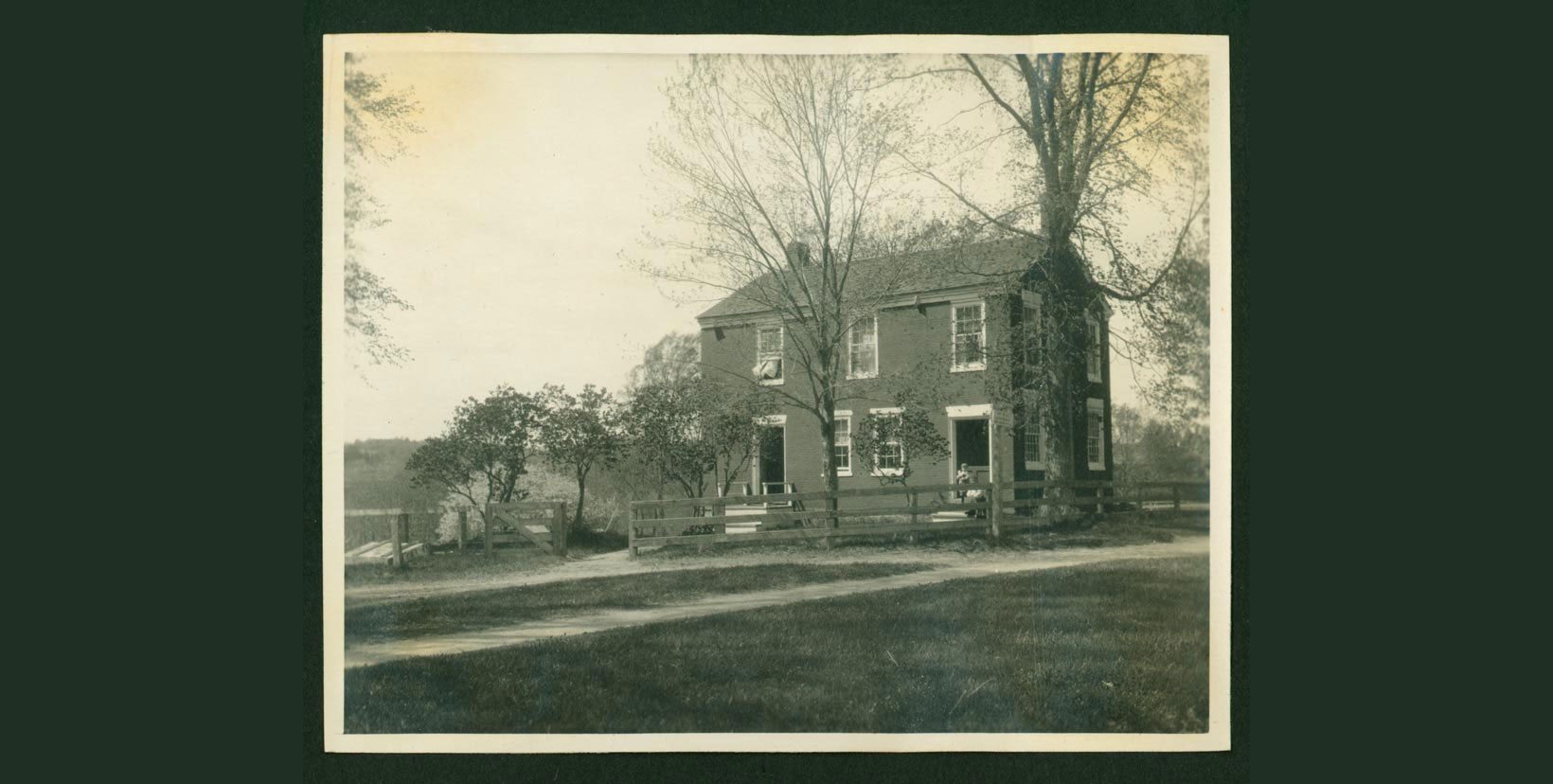
by Carolyn Wakeman
Feature Photo (above): Brick Store, Henry C. White album, 1904. Courtesy George White
Today a tangle of scrub trees and the Florence Griswold Museum’s paved driveway occupy the site of the historic Brick Store, a distinctive two-story building that stood for more than a century in the village.
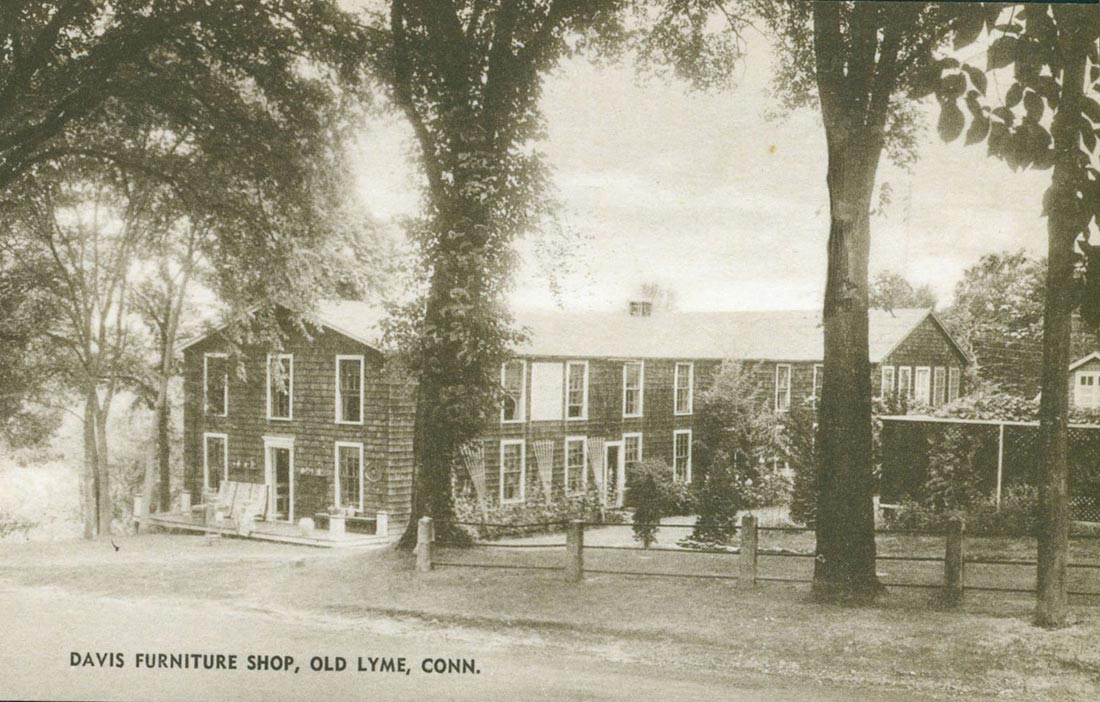
Davis Furniture Shop postcard. LHSA
The Davis Shop
The last owner of the Brick Store that stood on what is now the northwest corner of Hall’s Road and Lyme Street was a skilled furniture craftsman named Leon Stanley Davis (1884-1967). On November 1, 1922, he purchased a one-acre tract of land “with the building commonly called the Brick Store,”[1] and then turned what had been a two-family residence for Lyme artists into his single-family home. Alongside he built a shingled workshop whose rear ell extended toward the Lyme Art Association’s recently opened gallery.
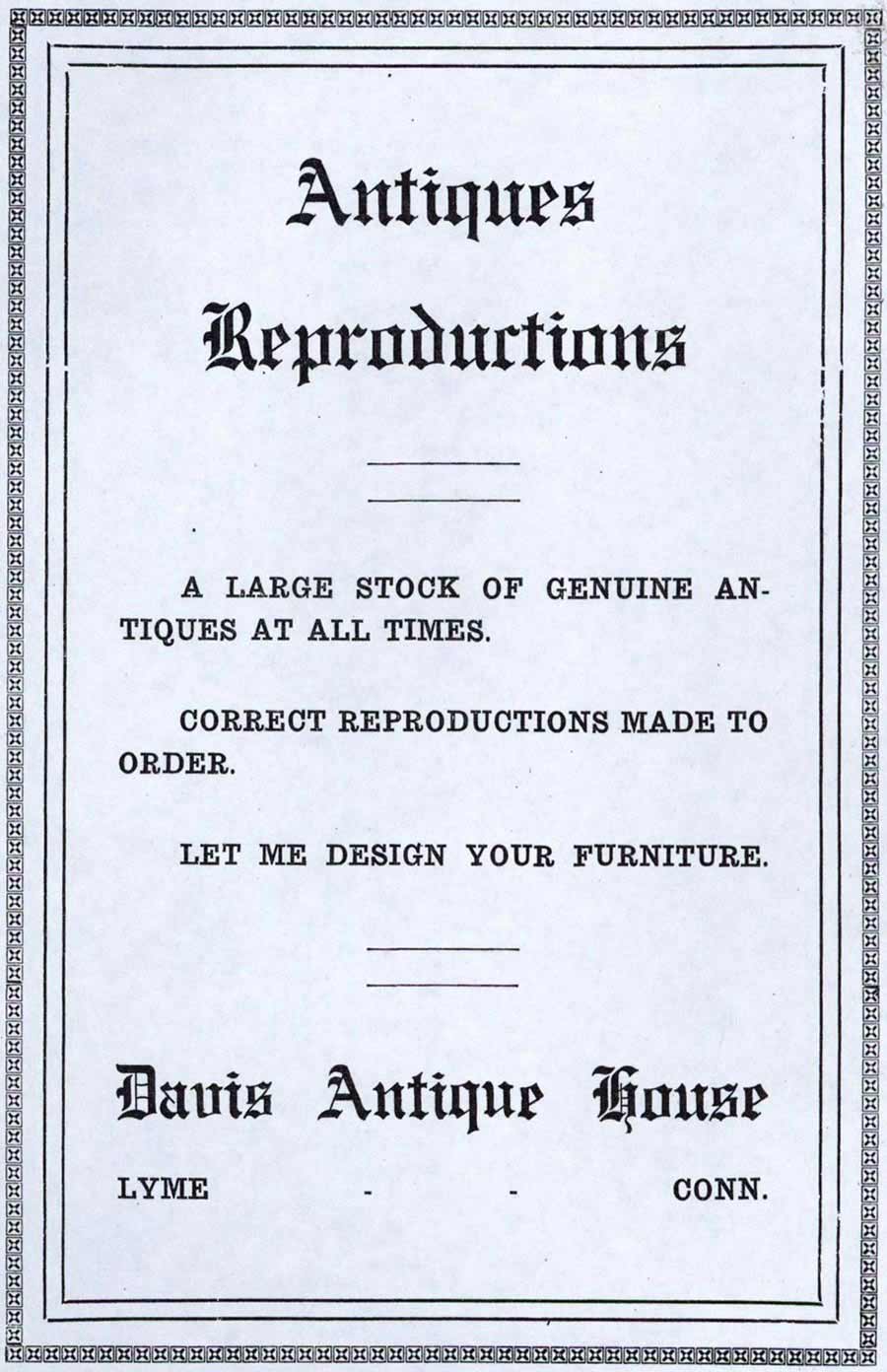
Davis Antique House advertisement, 1922. Lyme Grange Fair Premium List. Courtesy Lyme Public Hall

Brick Store with workshop and Lyme Art Association Gallery. Courtesy Werneth Noyes Collection
Handsome dining tables, desks, bedroom sets, and Chippendale-style mirrors, produced in a factory on nearby Mill Lane, were finished, displayed, and sold in the Davis Shop. Wallace Nutting’s Furniture Treasury , a two-volume anthology of American antiques, provided vintage designs that Davis expertly copied. His furniture business and gift store developed a loyal clientele along the shoreline and also attracted travelers on the busy Boston Post Road.
Davis became active in the cultural life of the town. During its 1935 Tercentenary celebrations, his shop exhibited “eight thousand bottles, all under 4 ounces in size. . .made in the shape of slippers, boots, bellows, log cabins, animals and birds. . . , the largest collection of bottles known to be in existence.” Two years later when Florence Griswold’s property was assessed, her neighbor Stanley Davis was one of the appraisers.[2]
But the Brick Store and the Davis Shop lay in the path of the Blue Star Highway, the four-lane precursor of I-95 that carved a path through Old Lyme. In 1947 the buildings were condemned and slated to be demolished.[3] Stanley Davis tried but failed to prevent the requisitioning of his land by the state, then reopened his shop across the Connecticut River in Essex.
The Brick Store’s Owners
The Brick Store has a curious history. “Mr Wm Noyes has a brick store nearly done on the corner of the new neck road,” wrote Harriet Lord to her sister Catherine in 1834. The new road to “the neck” connected the Lyme-New London turnpike (now Lyme Street) with the Connecticut River. The costly project, which required building a bridge across the upper Lieutenant River, was finally approved at a town meeting in 1829 when voters agreed: “to pay William Noyes and others two hundred dollars upon the giving of the Town a good title to the road from near the dwelling house of Charles J. McCurdy Esq to near Higgins Wharf.”[4] The new bridge, arched to allow scows piled high with salt hay to pass beneath at low tide, later became a favorite subject for Lyme’s artists.
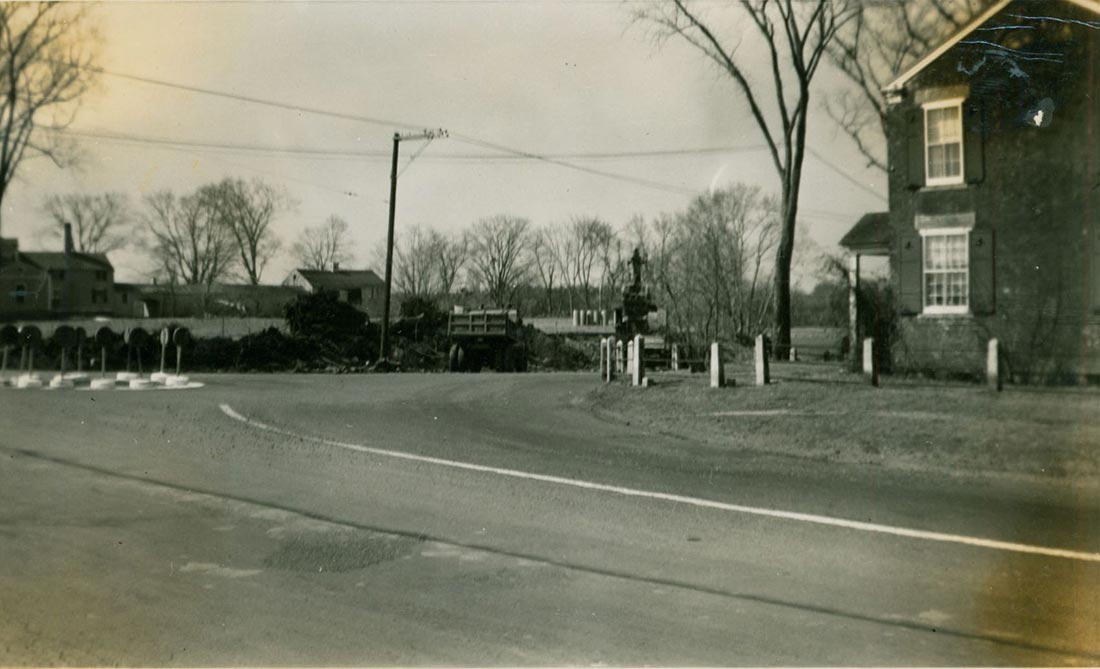
Brick Store with Blue Star Highway construction. Courtesy Werneth Noyes Collection
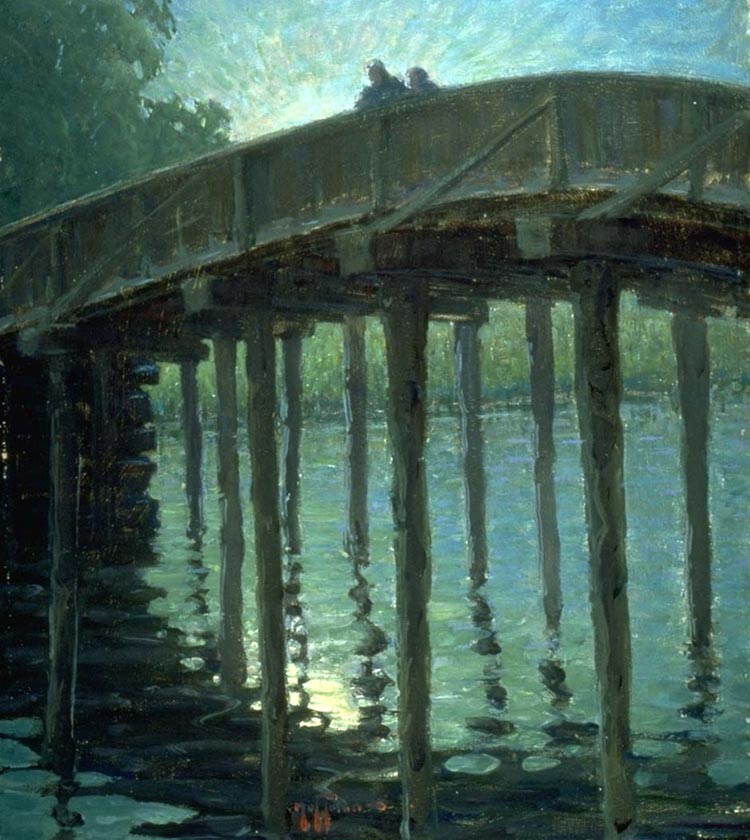
Harry Hoffman, Bridging the Lieutenant, ca. 1906. Oil on canvas board. Florence Griswold Museum, Gift of Mrs. Morris Joseloff
William Noyes (1792-1873) was then part owner of a warehouse and blacksmith shop near busy Higgins Wharf, and the brick storehouse alongside the new road expanded his business investments in town. But Lyme’s economic future seemed uncertain after the financial crisis in 1837, and the next year he purchased a mill in Troy, New York, then moved his family to the prospering Albany area.
In 1841 when Captain Robert Harper Griswold (1806-1882) bought the former Noyes estate, he acquired not only the stately mansion house (now the Florence Griswold House) designed by Col. Samuel Belcher but also the Brick Store. Toward the end of his life, he sold the brick building with an acre of land to his neighbor Sarah E. Huntington in 1875. Half a century later Mrs. Huntington’s heirs sold the same one-acre tract with the Brick Store to Stanley Davis.[5]
The Brick Store’s Uses
But while land records track the Brick Store’s owners, they offer few clues about its use. Traces of iron bars at the windows and the name “Noyes” burned into the wooden doorframe attest to the building’s commercial beginnings,[6] but two years after Captain Griswold’s purchase it apparently served a very different function.
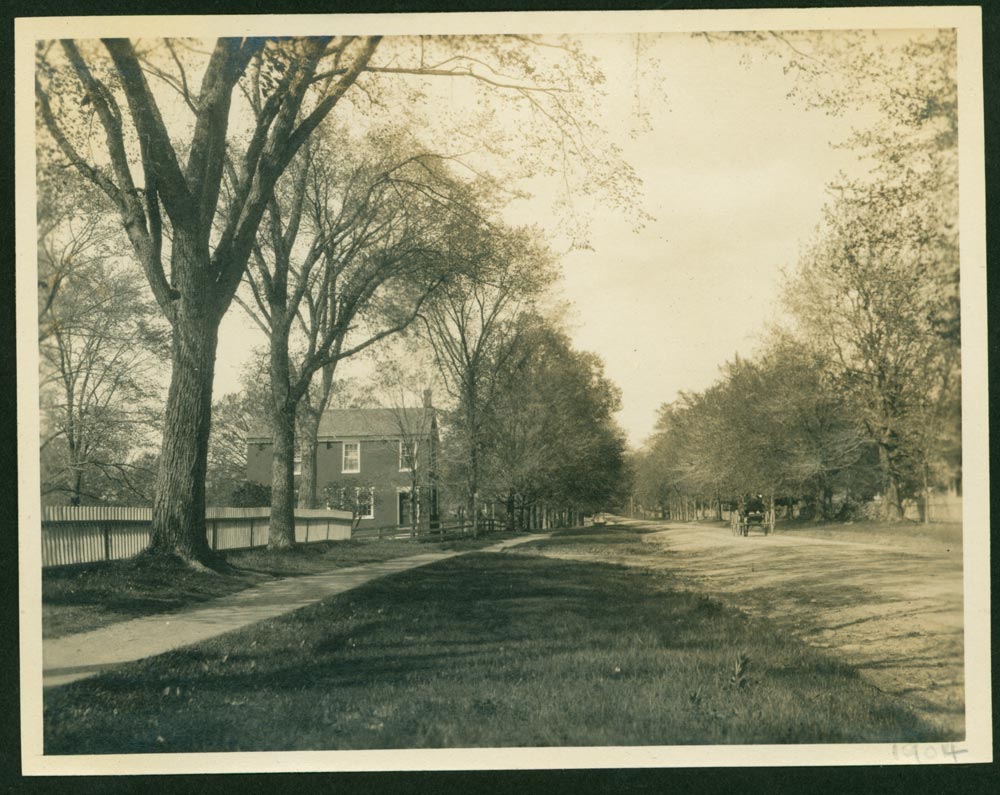
Brick Store looking north toward Florence Griswold’s house, Henry C. White album, 1904. Courtesy George White
Protestant “separatists” resisting the authority of the established Congregational Church had for years sought religious and financial autonomy. An early history of New London County states that an assembly of local Baptists received public recognition when they held services at “the Brick store (then occupied by Stephen L. Peck) where hitherto they had held meetings.” Said to be “destitute of a place for worship,” the Baptists gathered on May 11, 1843, “in the dooryard of Stephen L. Peck” (1791-1857) when “the Congregational meeting house was refused for the occasion.”[7]
By 1900 the Brick Store had been remodeled into a two-family residence where Lyme art colony members found lodging close to Florence Griswold’s boardinghouse. Reminiscences provided by artist Harry Hoffman’s son describe the brick building as a “rented tenement.” Henry C. White was “the first to take it over,” Jack Hoffman said, “and he fixed it up nicely.” Later Hoffman’s mother Beatrice Pope Hoffman lived there, as did artist Charles Bittinger, followed by Gregory Smith in 1910.[8]
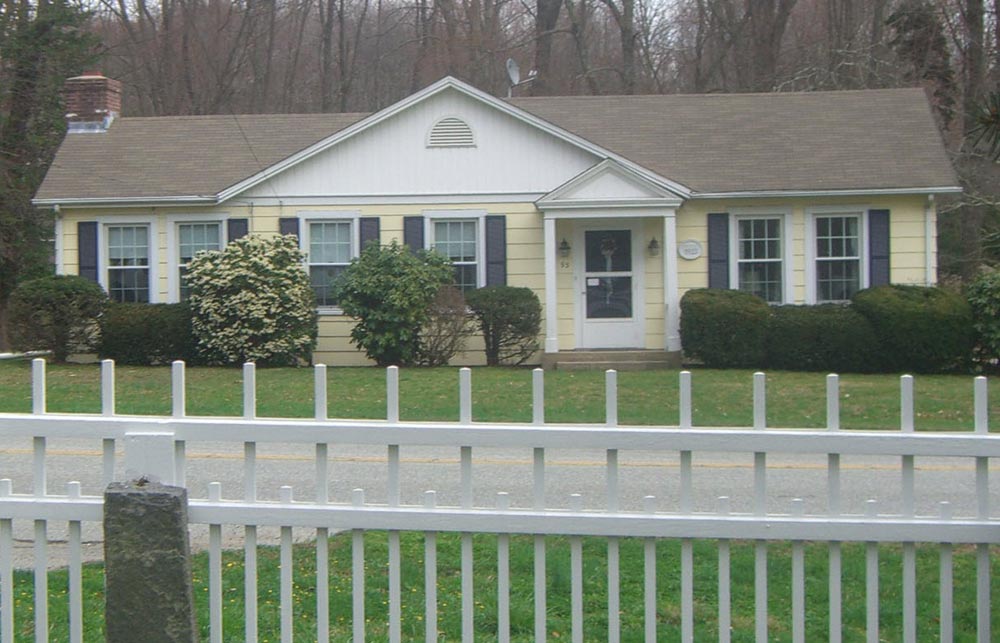
Harold Berggren house with Brick Store porch
Only a remnant of Lyme’s brick landmark survives. Across the street from the Florence Griswold House, Harold Berggren in 1947 converted the garage built for the Lyme Auto Service into his family’s home and incorporated a piece of the Brick Store.[9] One of its paired porches surrounds the front doorway.
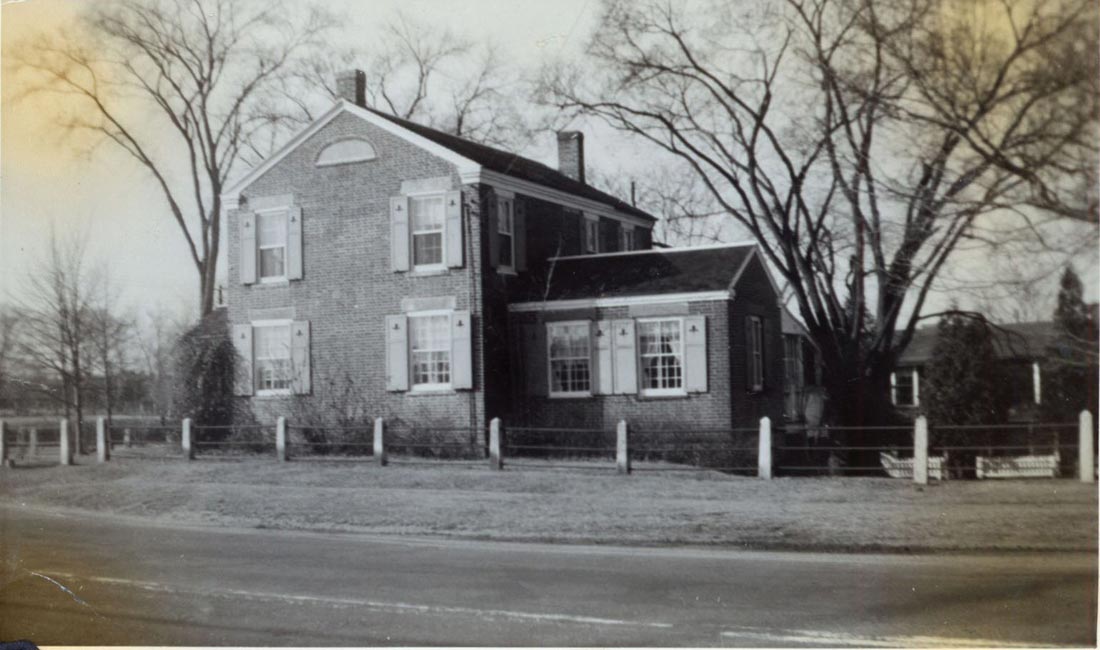
Brick Store from Lyme Street. Courtesy Werneth Noyes Collection
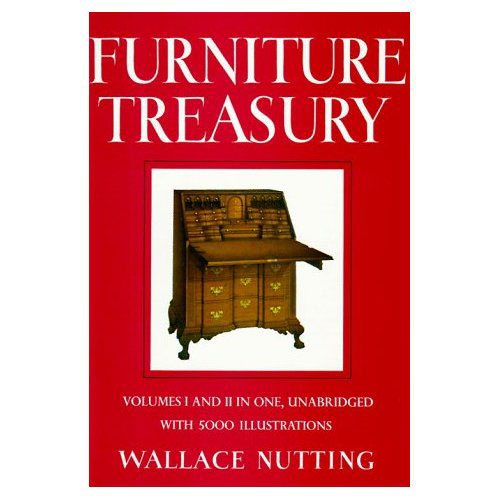
Wallace Nutting, Furniture Treasury
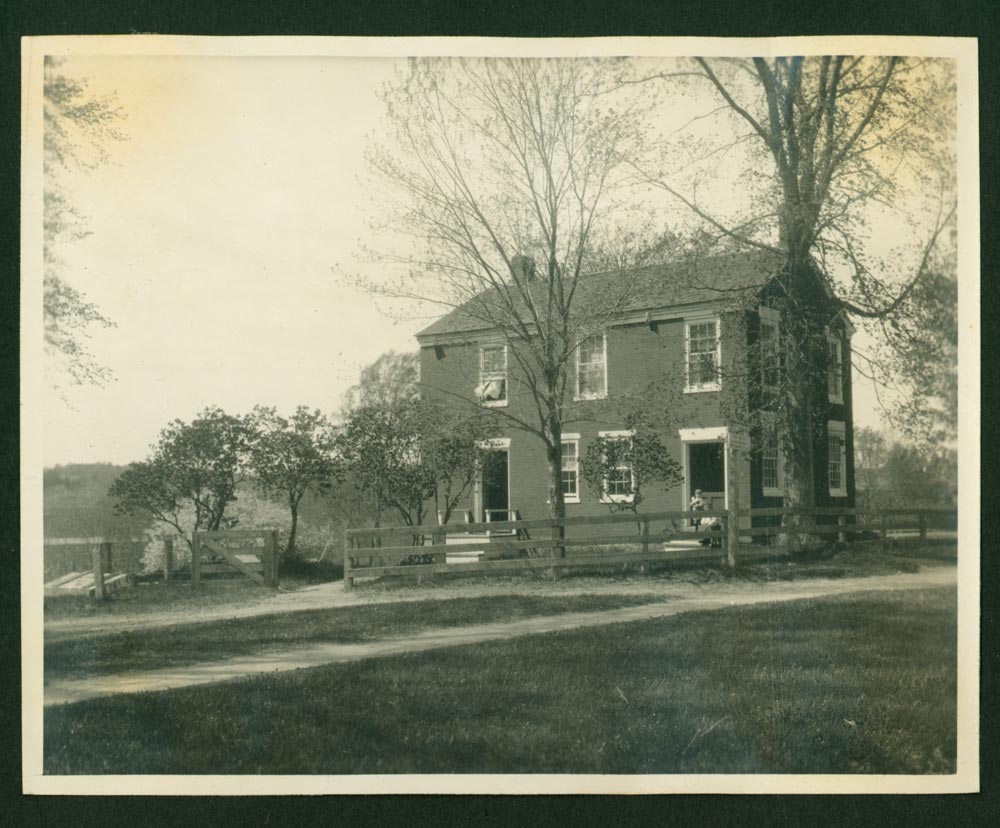
Brick Store with White children, Henry C. White album, 1904. Courtesy George White
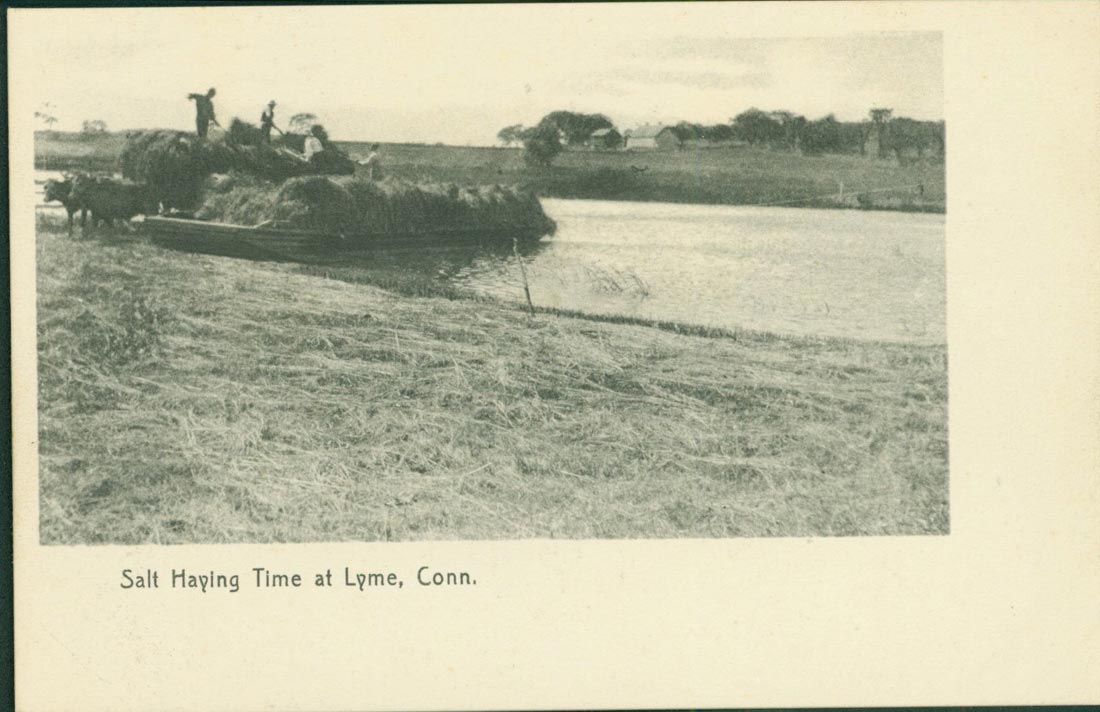
Scow with salt hay postcard. LHSA
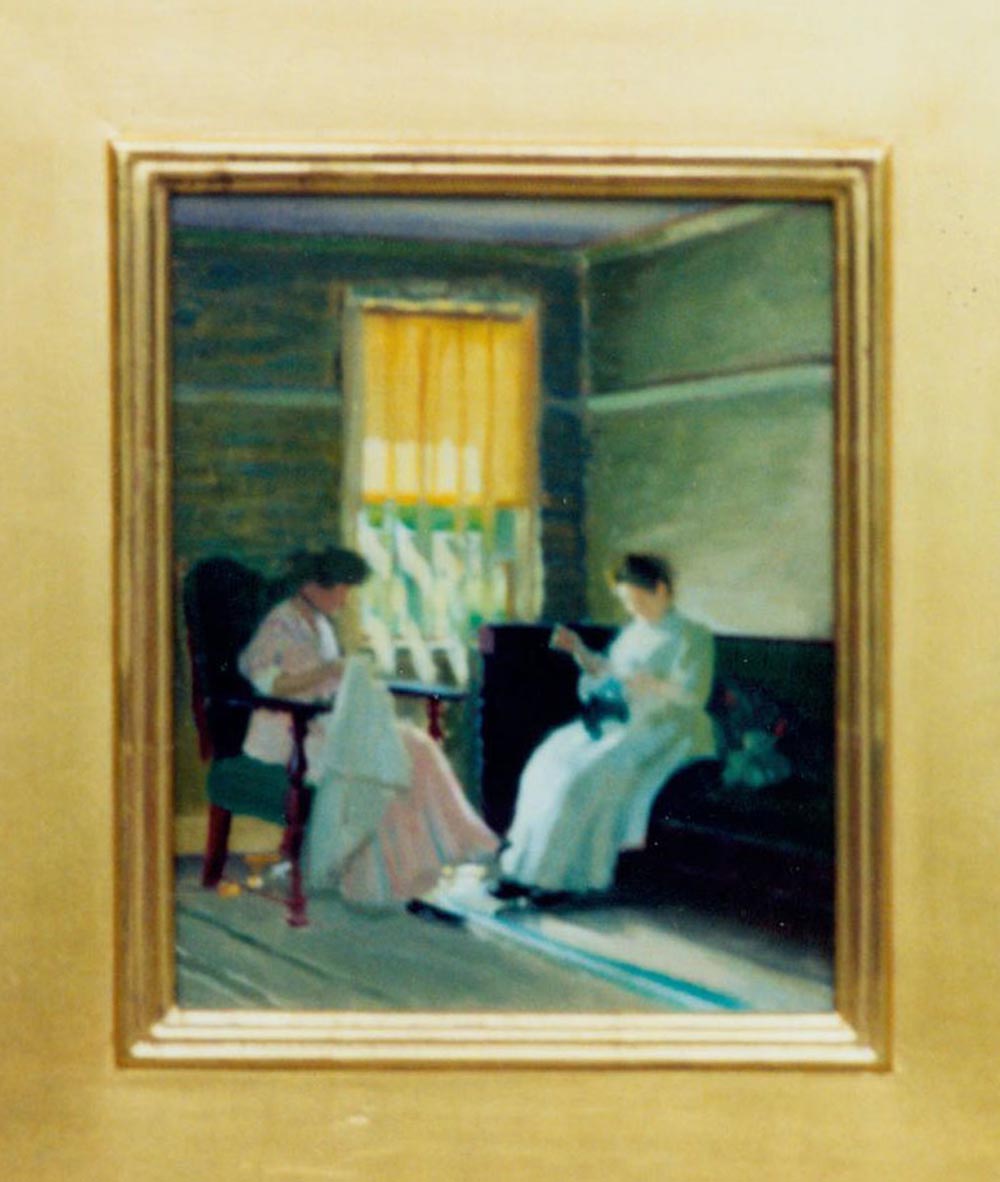
Charles Bittinger, The Red Brick Store. Courtesy Francis Bealey American Arts and Gunn Gallery
[2] Stanley Schuler, “From Essex and Old Lyme, Stanley Davis furniture traveled far,” Old Lyme Gazette (n.d., 1998), p. 6. A Davis Shop advertisement in The Lyme-Light (August 1929) claimed: “Our Bench Made Reproductions are correct in design, beautifully finished, and quite superior to the usual offering in this line.” See Box Misc. 2:41, Lyme Historical Society-Florence Griswold archives (LHSA). Volumes I and II of Wallace Nutting’ Furniture Treasury appeared in 1928 with over 5,000 illustrations of period furniture; Volume III followed in 1933. Ellen Ely, et al, “Landmarks of Old Lyme, Connecticut” (Old Lyme, 1935), p. 28, notes that the bottles exhibited in 1935, known as the Parsons collection, represented a seven-year collecting effort by Rev. William F. Parsons, Rector of St. Anne’s Episcopal Church. The second appraiser was artist E. Gregory Smith; each received $10.00 as compensation. See Florence Griswold Papers, Box 2, LHSA.
[3] Old Lyme Land Records 42:427: “This is to certify that the Old Lyme-Old Saybrook Bridge Commission. . .has pursuant to the provisions . . .to the General Statutes of Connecticut, taken the following described property: Land owned by L. Stanley Davis. . .on the 19th day of March 1947.”
[4] Harriet Lord to Catherine Lord, September 13, 1834, Courtesy Ludington Family Collection; Town Meeting Records, Lyme, CT, vol. 4, 1801-1855, p. 120.
[5] Lyme Land Records 31:151, 35:179; Old Lyme Land Records 2:496, 10:70.
[6] The iron bar residue led to an assumption that the building was constructed in 1812 at the start of war with Britain, but the Brick Store is not shown on Moses Warren’s 1815 map of Lyme, nor is it mentioned in the 1819 deed transferring property from William Noyes, Jr. (1760-1834) to his son William Noyes (1792-1873). See Ely, p. 13; Lyme Land Records 29:62.
[7] D. Hamilton Hurd, History of New London County, Connecticut (Philadelphia, 1882), p. 559; “53rd Anniversary Services of the Old Lyme Baptist Church,” The Sound Breeze, May [n.d.] 1896.
[8] Jack Hoffman Papers, Box 1, LHSA.The New Era (Deep River, CT) reported on May 13, 1910, “Mr. and Mrs. Bittinger, who are to occupy the Brick house during the summer, have already arrived.”
[9] An article about Harold Berggren’s home, with illustrations, appeared widely in local newspapers like the Kokomo [Indiana] Tribune, May 16, 1950, to promote U.S. Savings Bonds.

